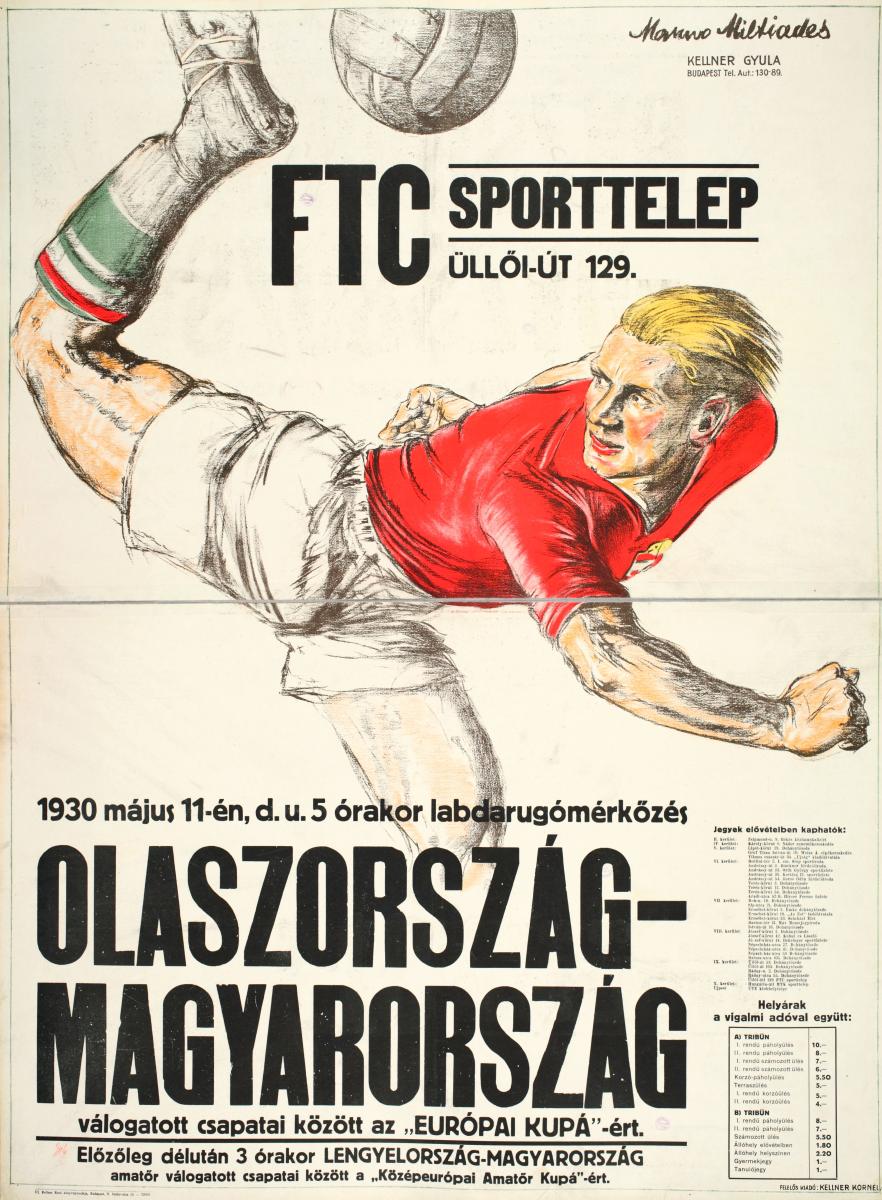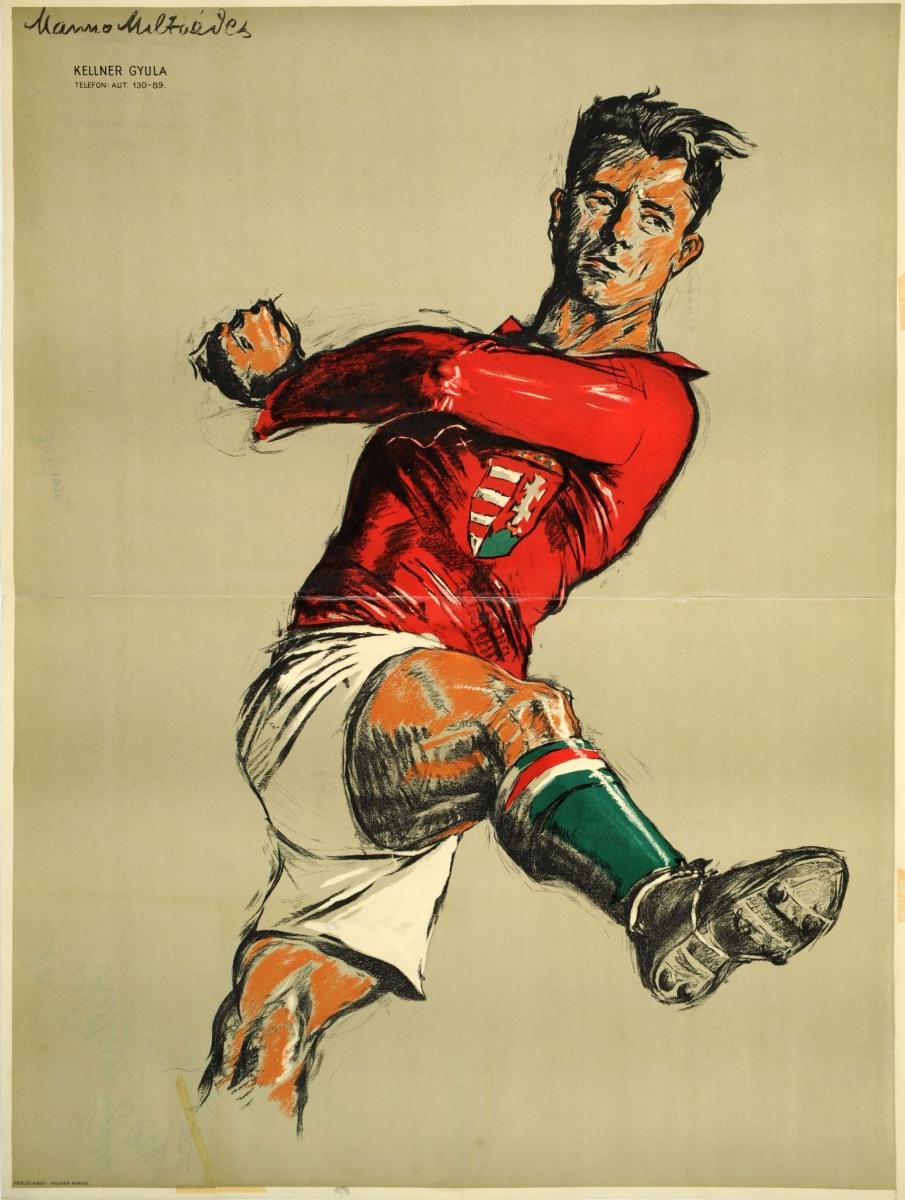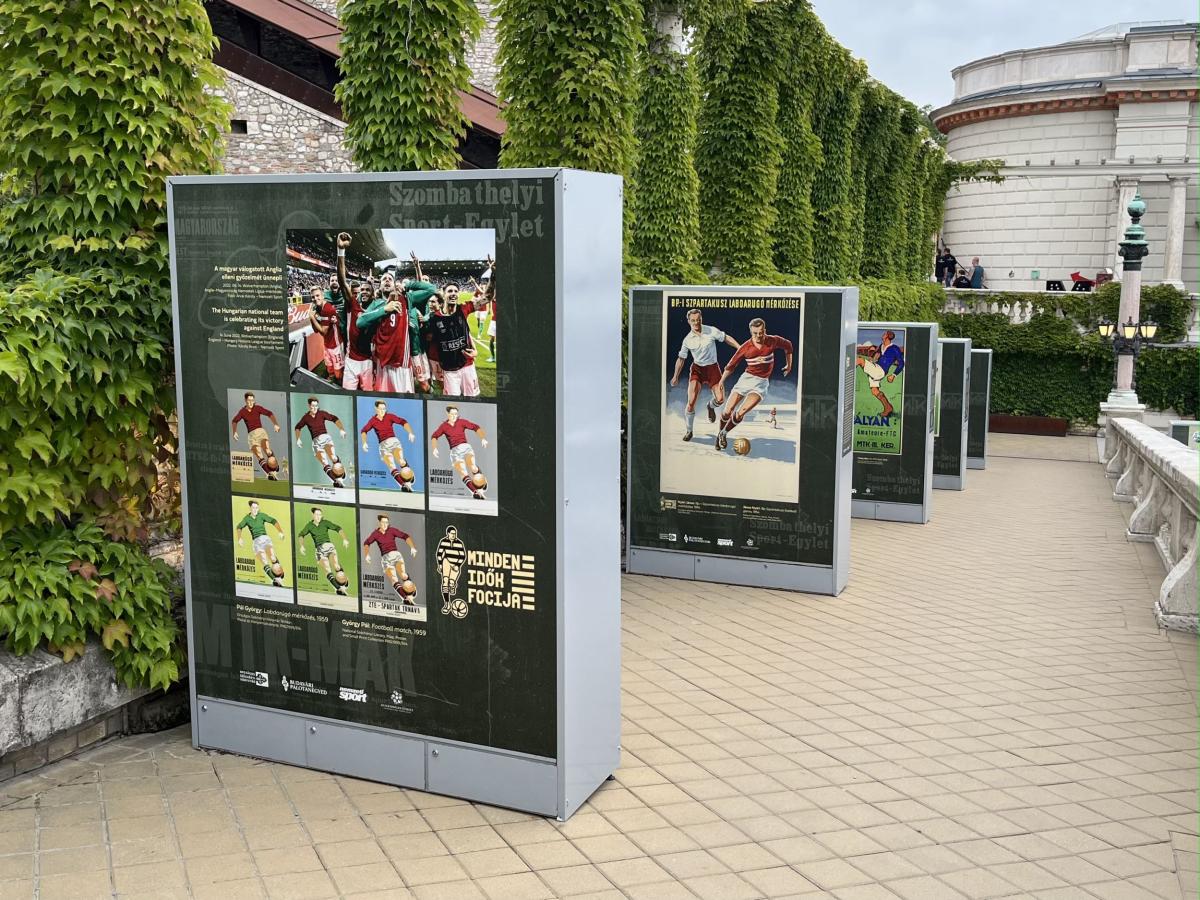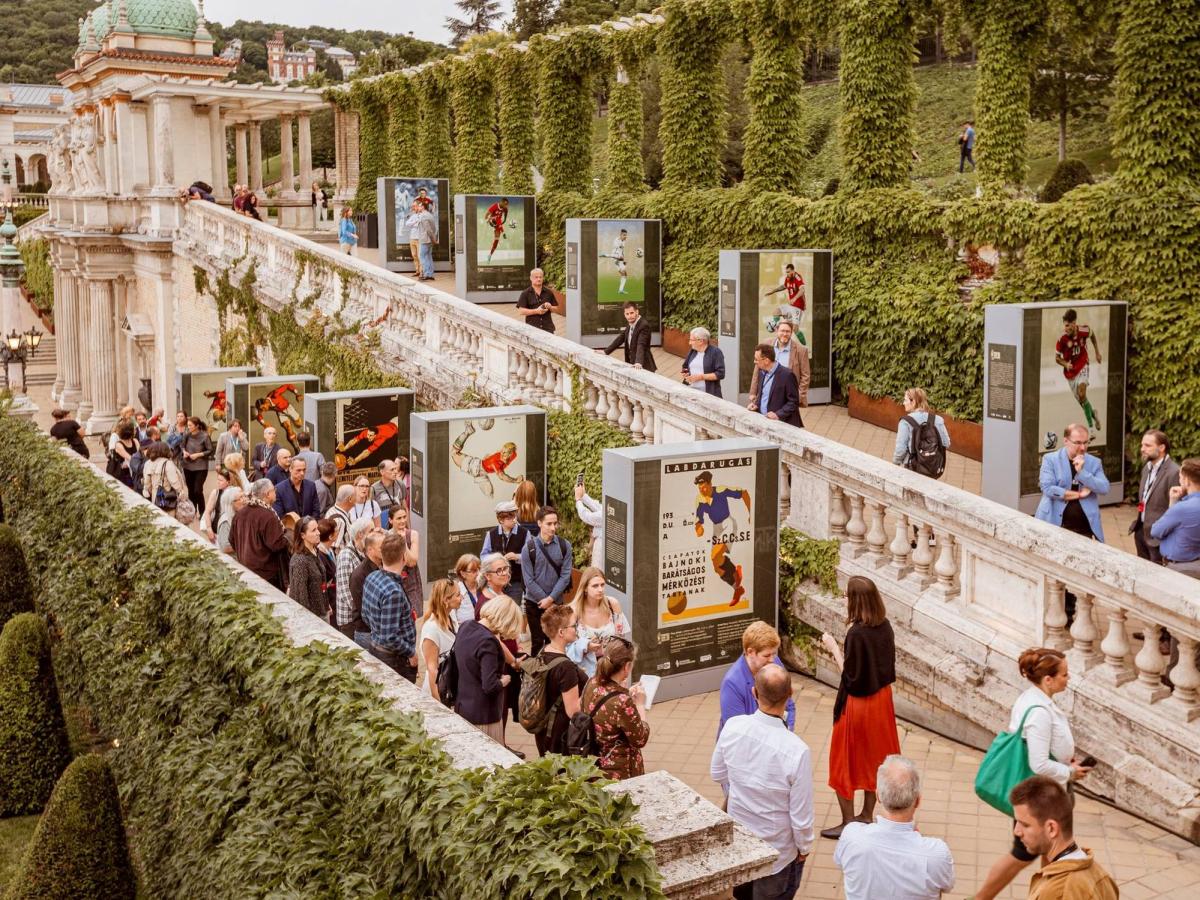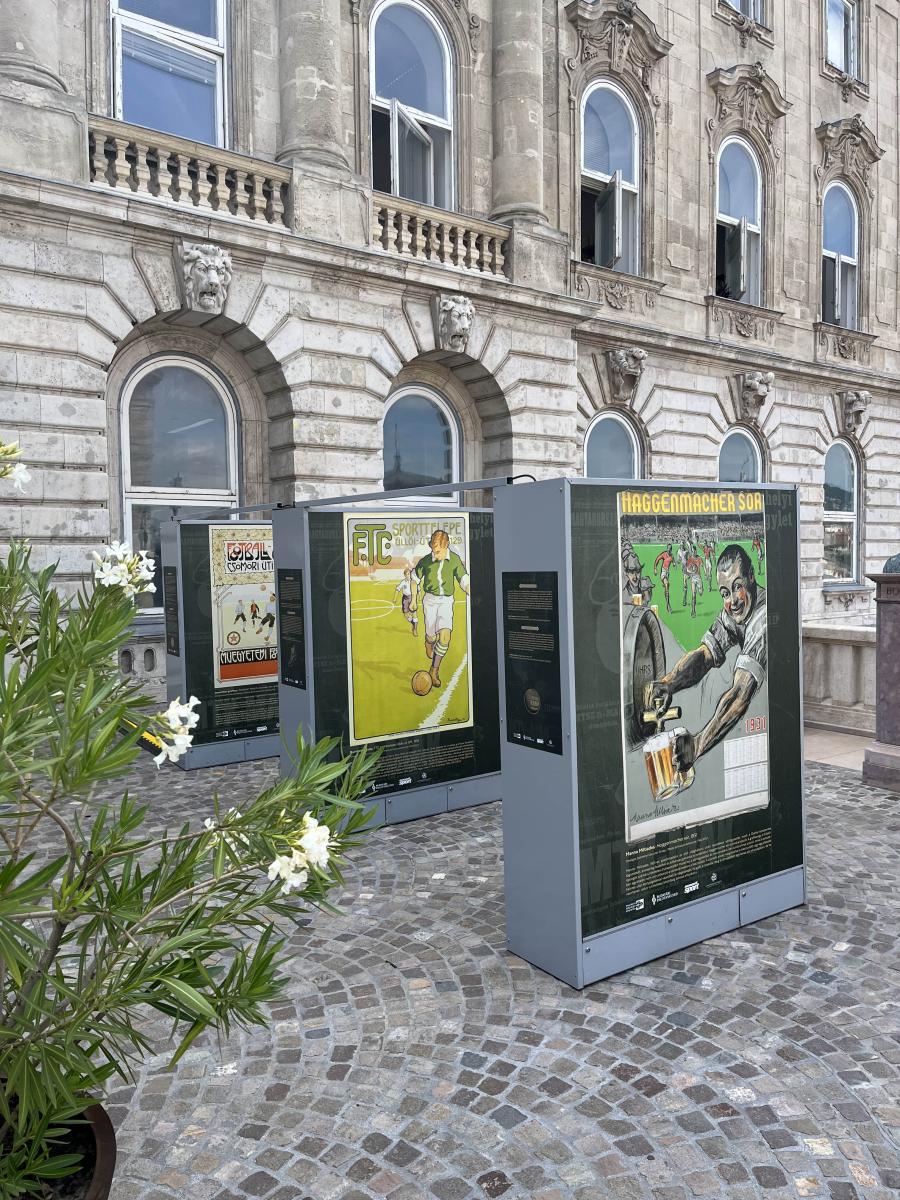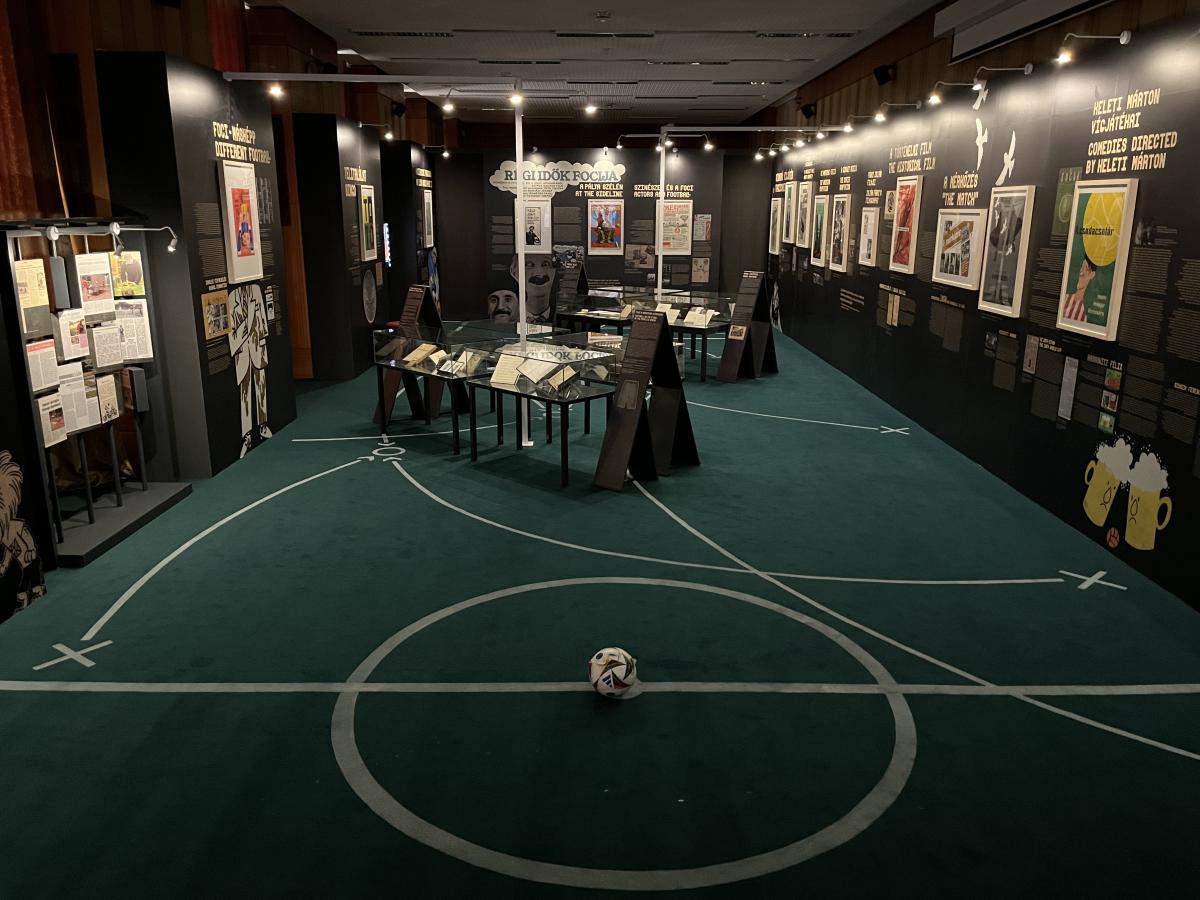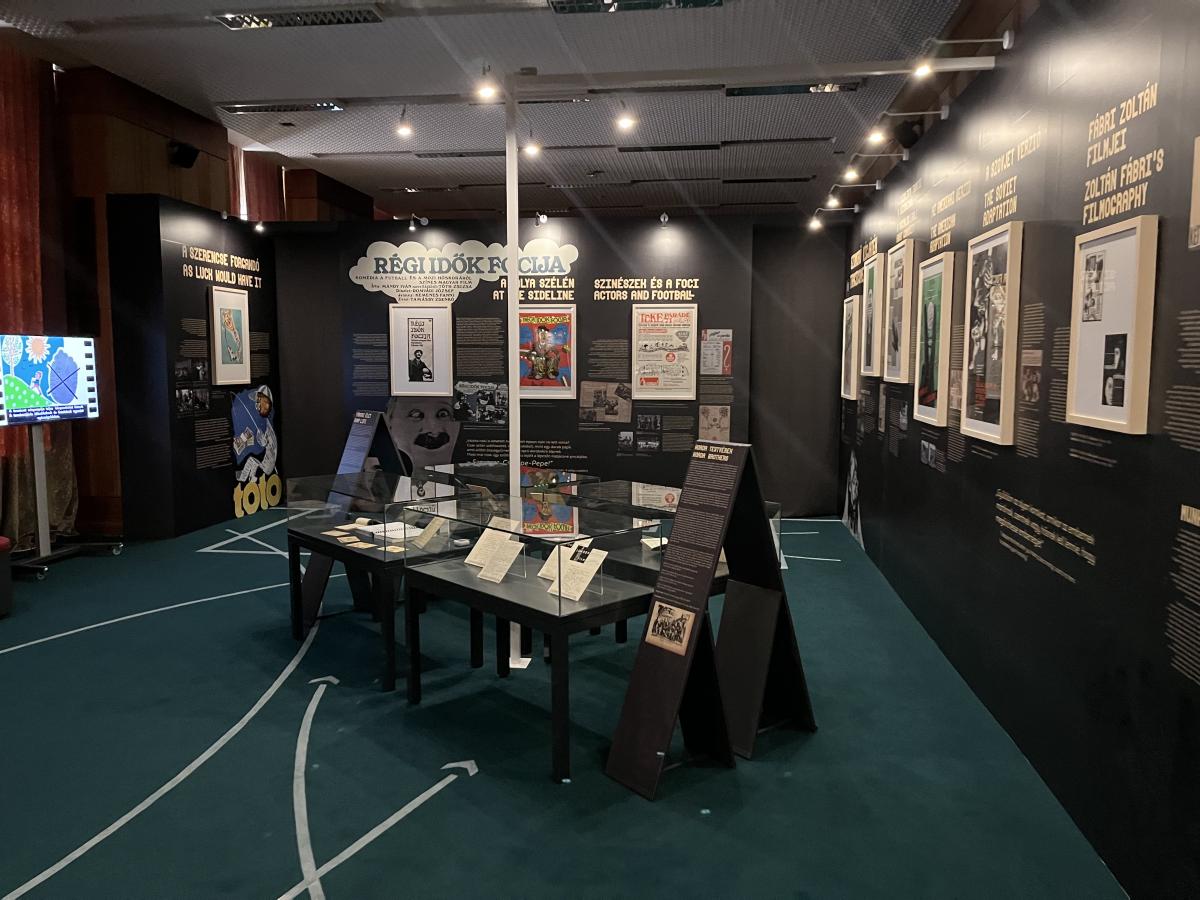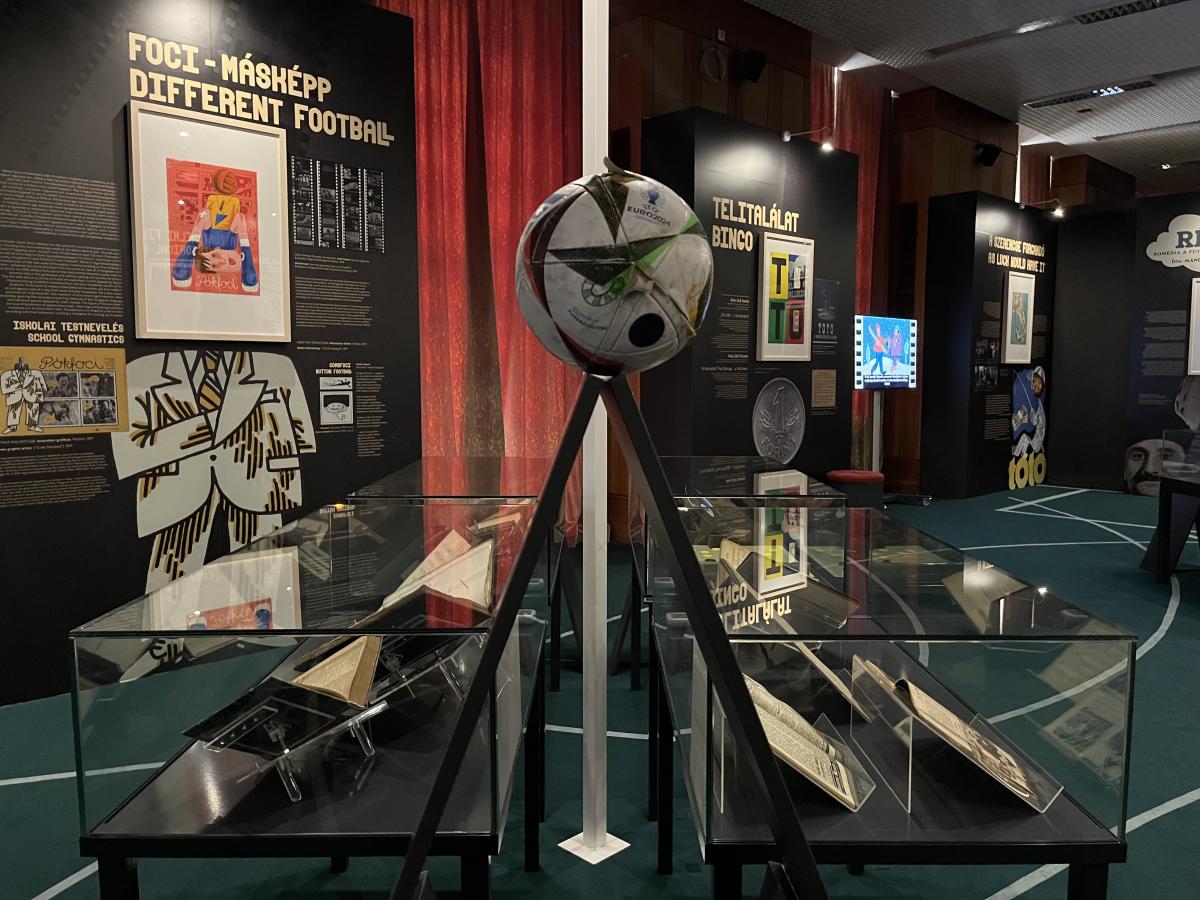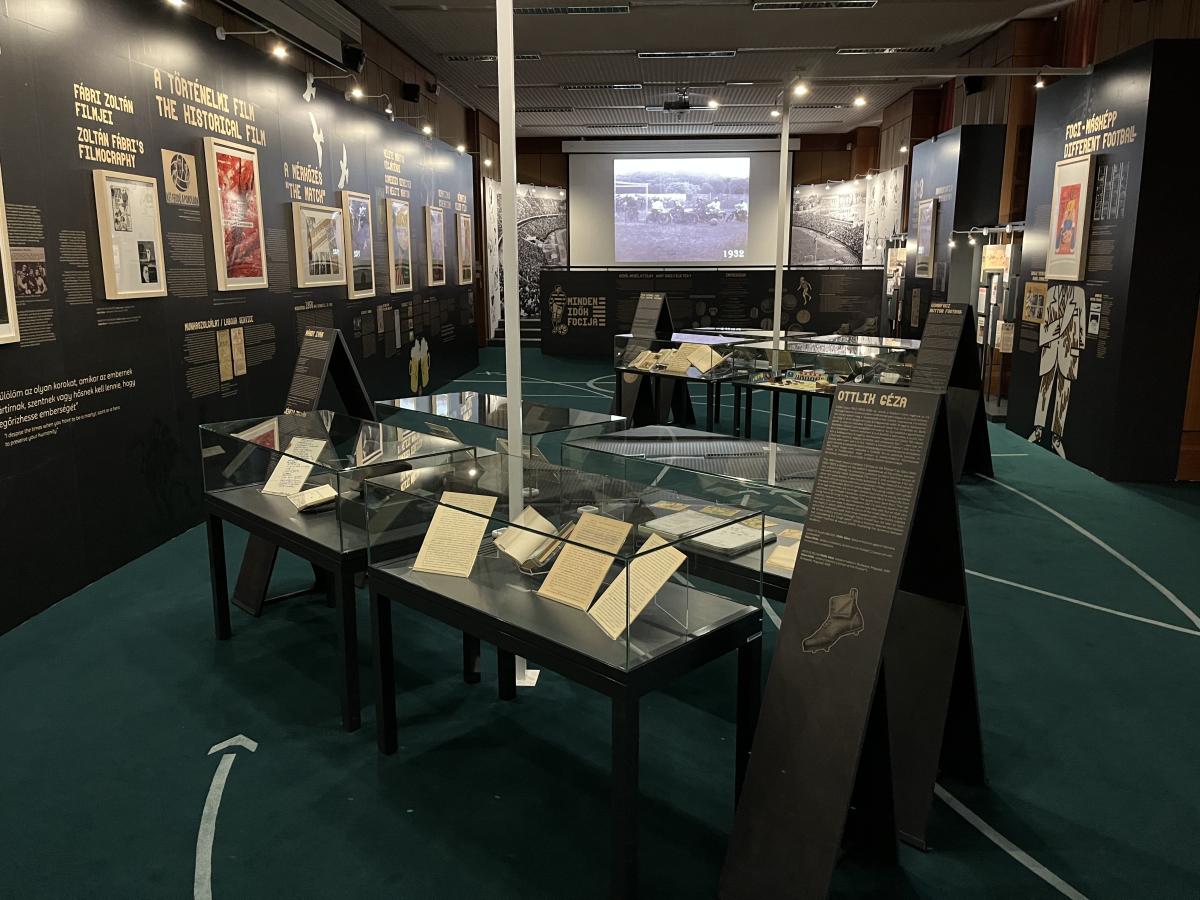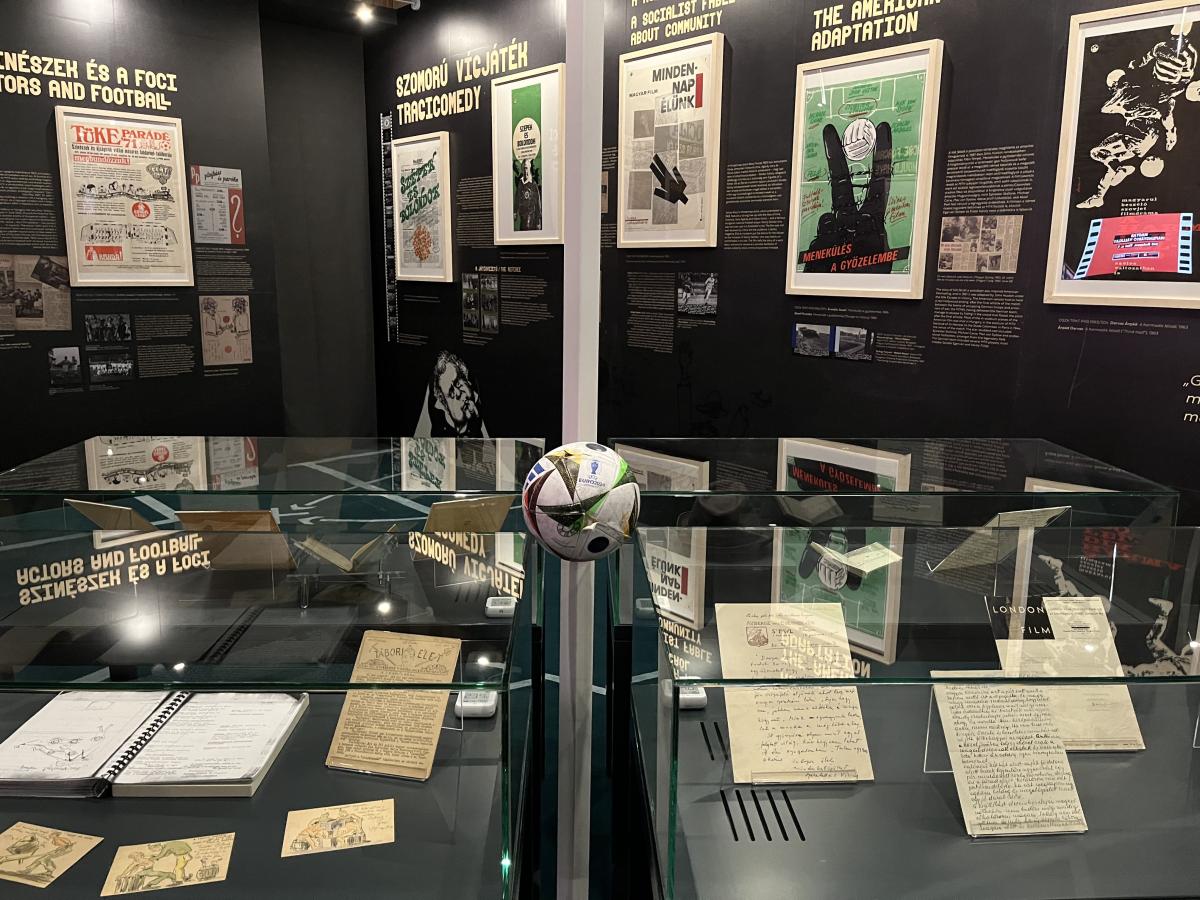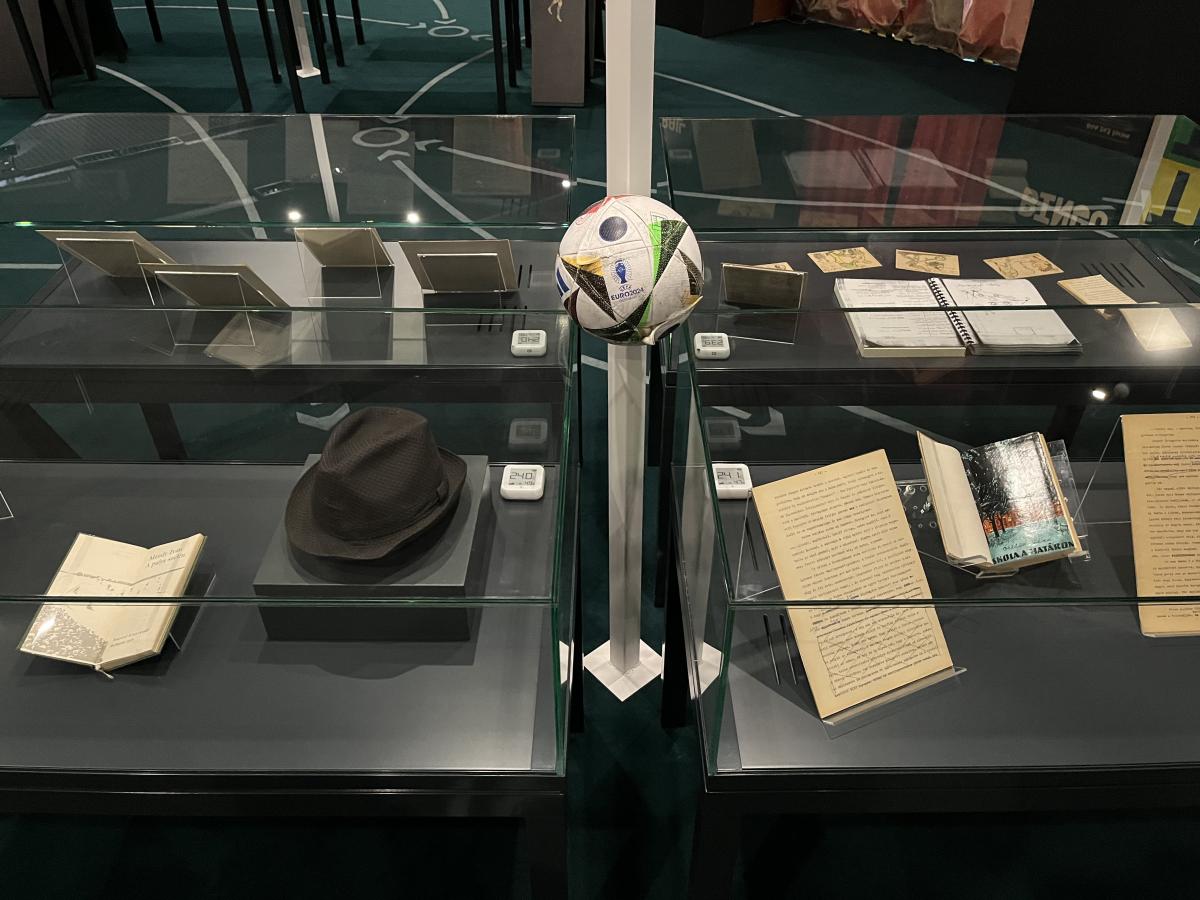
All-Time Football
During the European Football Championship, the NSZL – in cooperation with the Buda Castle District and Nemzeti Sport – will organise an exhibition entitled All-Time Football. The exhibition will not only take place inside the library, but also in the Gloriette of the Castle Garden Bazaar and at the entrance to the Lion Courtyard.
The exhibition will be on display in the Ceremonial Hall of the NSZL from 15 June to 14 July 2024,
Tuesday to Saturday from 10 am to 6 pm
(last entry: Tuesday–Thursday 5 pm, Friday–Saturday 6 pm).
Visitors with a reader pass can visit the exhibition free of charge.
For visitors without a reader pass, the following ticket prices apply:
- Full-price ticket: 1200 HUF
- Discounted ticket (student, pensioner): 600 HUF
- Family ticket for 4 persons: 3000 HUF
- Family ticket for 3 persons: 2500 HUF
Guided tour (on request): 3000 HUF/group
For school groups the guided tour is free of charge. Registration (at least two weeks before the planned visit): csoportvezetes@oszk.hu.
With a ticket for the indoor exhibition the temporary exhibition The Forms of Time can be visited free of charge.
The backbone of the exhibition is formed by posters from the NSZL Map, Poster and, Small Print Collection, which bring to life stories unfolding at the intersection of culture, history and football.
The three units, also separated spatially, approach the messages conveyed by the posters in three different ways.
In the first part (Gloriette of the Castle Garden Bazaar), graphic works of the past are juxtaposed with sports photos of the present, inviting visitors to play a game to see if there are more similarities between the graphic works of the past and the photos of the present than one might think. Visitors will be able to see works by Miltiades Manno and Mihály Bíró, among others, and get answers to questions such as what a blank poster is.
In the second part of the exhibition (at the entrance to the Lion Courtyard), football's rise to popularity is recalled, with works by well-known graphic artists (such as Gyula and János Macskássy and Félix Kassowitz) and interesting pieces such as an Art Nouveau football poster. In a short span of time, football became extremely popular, thanks in large part to the game's simple rules and low equipment requirements. In addition, the social changes that took place with the First World War helped to institutionalise the game, as football offered cheap entertainment to a wide range of people. The fan base of the first football teams was also organised according to social groups, and weekend match attendance became a major event in the lives of football fans. Belonging to a team is still an important part of identity today.
The third part, presented in the NSZL's ceremonial hall, will focus on the relationship between film and football. The original posters on display usually carry the idea and mood of the movie they are promoting in simple, clear visual messages, and are therefore an excellent way of presenting the essence of the moving image as a static point. The individual feature films included in the exhibition broaden the interpretative framework to include not only the historical football aspects of the film in question, but also its historical, cinematographic, social and cultural connections, since it is an excellent historical source for the period in which the work was produced.
Examples of such topics include the life of the labour camp in the film Two Half Times in Hell, propaganda (the work of Márton Keleti), power and football, the relationship between power and film, writers and football (especially Iván Mándy and Géza Ottlik), film adaptations and the relationship between music and football. Treasures from the NSZL Manuscript Collection, such as the manuscript of Géza Ottlik's School at the Frontier, Zoltán Jékely's poem Admonition for Children Playing with Ball, the letters of the Korda brothers and Kálmán Stobbe's diary from the First World War, are on display.
The ceremonial hall will also feature artefacts on loan from the Stamp Museum and the Petőfi Literary Museum.
The curator of the exhibition: Fruzsina Sulics, researcher at the NSZL Map, Poster, and Small Print Collection
Architect: Mária Gazdag
Graphic designer: Tamás Takács
Installation: Kiáll Kft.
Kapcsolódó tartalmak:
Minden idők focija – kiállítás és programsorozat
A kiállítás ünnepélyes megnyitója



